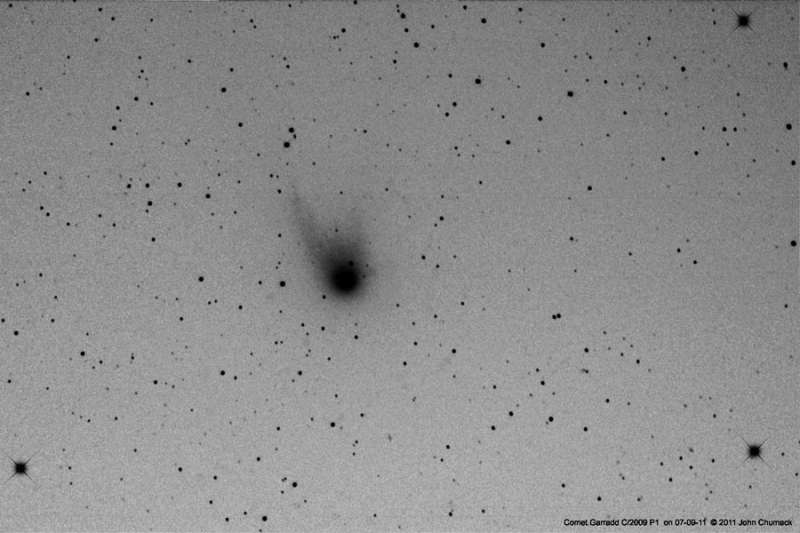
|
Credit & Copyright: John Chumack (Galactic Images)
Explanation:
Another large snowball is falling toward the Sun.
Comet Garradd
was discovered two years ago by
Gordon Garradd
in
Australia,
and is currently visible through a small telescope at
visual magnitude nine.
Officially designated C/2009 P1 (Garradd), the comet will likely
continue to brighten, with recent projections placing it at peak magnitude
six or
seven in February 2012, just below naked eye visibility.
Comet Garradd
is already showing a short
tail and is seen as the
elongated fuzzy patch in the above negative image recorded earlier this month from
Yellow Springs,
Ohio,
USA.
Other comets are also currently
falling into the
inner Solar System and brightening as well, including
C/2010 X1 (Elenin), expected to peak near magnitude six in early September,
45P/Honda-Mrkos-Pajdusakova expected to peak brighten past magnitude eight in
mid-August, and
C/2011 L4 (PANSTARRS) which
may become visible to the unaided eye
during the early months of 2013.
|
January February March April May June July August September October November December |
| ||||||||||||||||||||||||||||||||||||||||||||||||
NASA Web Site Statements, Warnings, and Disclaimers
NASA Official: Jay Norris. Specific rights apply.
A service of: LHEA at NASA / GSFC
& Michigan Tech. U.
Based on Astronomy Picture
Of the Day
Publications with keywords: comet - Solar System
Publications with words: comet - Solar System
See also:
- APOD: 2025 December 1 Á 3I ATLAS: Tails of an Interstellar Comet
- APOD: 2025 November 25 Á Comet Lemmon and the Milky Way
- 3I/ATLAS: A View from Planet Earth
- APOD: 2025 November 17 Á Comet Lemmons Wandering Tail
- APOD: 2025 September 30 Á Comet Lemmon Brightens
- APOD: 2025 September 29 Á Two Camera Comets in One Sky
- APOD: 2025 September 26 Á A SWAN an ATLAS and Mars
